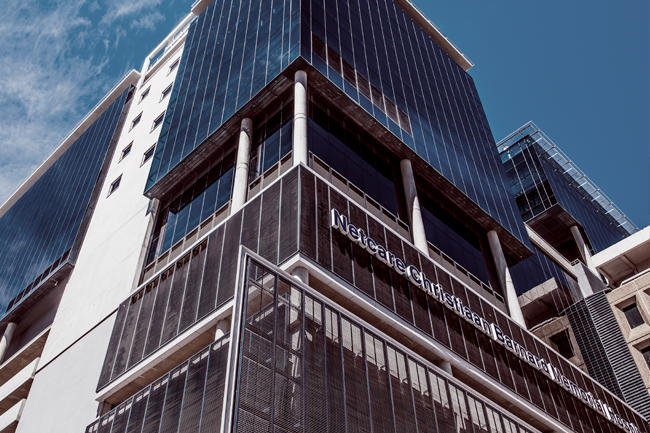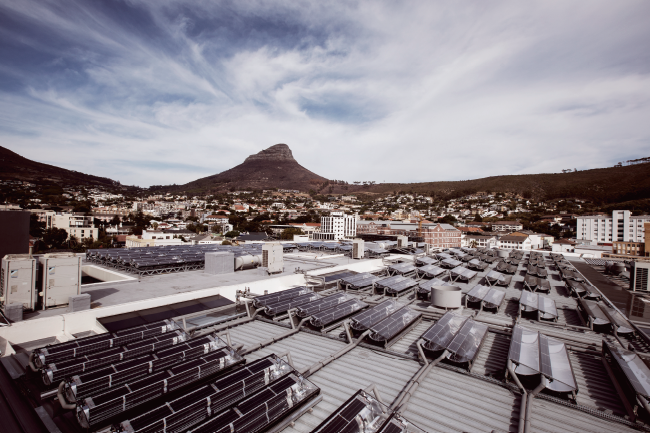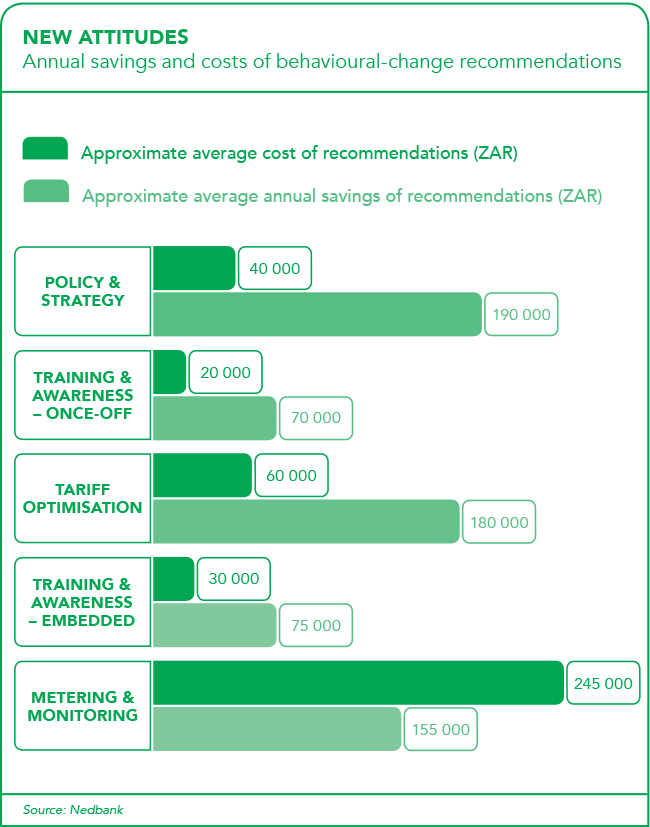Should you ever find yourself in a Netcare hospital bed, you may not fully appreciate this at the time, but the private South African healthcare group has managed to shrink its energy consumption by 18% per bed since 2013 – thanks to a concerted energy-efficiency and digitalisation programme.
This is no small feat, because it translates into a reduced carbon footprint of more than 47 000 tons of greenhouse gases per year. In line with the thinking that ‘if you can’t measure it, you can’t improve it’, the group now has approximately 1 000 electricity and water meters installed across its medical facilities for real-time metering and data collection. The usage is monitored around the clock and any irregularities are flagged so the facility managers can take quick remedial action to avoid any wastage. By installing check meters on the main electricity supply lines into its buildings, Netcare was able to select the best tariff structures and saved substantially on energy costs.
Such energy savings are likely to boost the corporate reputation and brand integrity, which is increasingly important when targeting socially and environmentally conscious millennials and younger consumers. There’s a direct financial reward too, as optimising energy efficiency simultaneously reduces carbon emissions as well as utility costs. The cumulative savings of Netcare’s energy-saving programme have already reached ZAR220 million, according to Energy Partners, the solutions provider spearheading the programme. It reports that another client, operating in the food retail industry, has to date achieved energy savings as high as ZAR1.8 billion.
Single big-ticket items such as the intelligent facade of Cape Town’s new purpose-built Christiaan Barnard Memorial Hospital, often account for large savings themselves (about a ZAR120 000 reduction in the annual electricity bill). The panoramic facade consists of an external glass skin and internal glass windows, separated by empty space. ‘It works like a giant Thermos flask; with the facade forming an insulation barrier, which ensures significantly less dependence on the air-conditioning units in the hospital for maintaining ideal internal environmental conditions,’ says Richard Friedland, CEO at Netcare.
Initially, the focus of the healthcare group’s sustainability programme, launched in 2013, was on energy as the highest cost area. Energy Partners performed energy audits, diagnostics and data analysis, identified energy-efficiency initiatives and implemented them. ‘In time, the scope has grown to include water, waste and other carbon-emission contributors, as well as to accommodate changes in operations, technologies used, physical expansions and continue pursuing utilities cost-reduction targets,’ says the solutions provider in the project description.
Now halfway through the 10-year pro-gramme, Netcare seems to be on track for its goal of reaching up to 35% reduction in energy footprint or consumption by 2023. It has collected several awards on the way, most recently the titles of Commercial Corporate Company of the Year and Commercial Energy Project of the Year by the Southern African Energy Efficiency Confederation in November 2018. At the same awards ceremony, the coveted title of Energy Services Company of the Year went to IDM Solutions for helping the retailer Spar to save ZAR7.8 million in operating costs through a targeted energy efficiency initiative in the Eastern Cape. ‘Energy costs typically account for as much as 30% to 50% of operating costs for commercial and industrial buildings,’ says Lisa Shaw, energy manager at Cushman Wakefield Excellerate’s utilities division. ‘Moreover, cutting energy costs by 20% has the same impact on the bottom line as a 5% increase in sales. Failure to manage energy costs may have a serious impact on the profitability of the business.’

Many big businesses in Africa have, therefore, implemented strategic energy-saving programmes, with some even incorporating on-site renewable power generation – primarily in the form of solar PV rooftop installations, which in South Africa are eligible for a government tax incentive. ‘An increasing number of these businesses are also looking for ways of monitoring their energy consumption more comprehensively to better present this information to the public,’ says Mila Vicquery, energy reporting head at Energy Partners Intelligence. The firm’s online utility management platform, called Glo, shows a live view of current energy consumption, generation and savings on a plant, site and portfolio level. The data views can be displayed in key areas such as the reception, factory lines and on store screens, with mobile alarms and notifications. Vicquery explains why this is useful. ‘Companies that can demonstrate their efforts to reduce operating costs and expand profit, make themselves much more attractive to investors for potential partnerships.’
Technology is not only making energy savings more visible; it also lies at the very core of energy-efficiency programmes – enabling, for instance, ever more advanced building management systems (BMS), which centrally control the various components within office, commercial, public or residential buildings. BMS are essential tools for facility managers as they can reduce energy consumption by optimising systems controlling the lighting; heating, ventilation and air conditioning (HVAC); security and access control; fire prevention and disaster-response; as well as the mechanics of the building. They can integrate equipment from different manufacturers and use the internet of things to extract and communicate data.
For example, occupation sensors automatically switch the lights on and off according to movement in areas of the building, which significantly saves on electricity. Another function can calculate the number of occupants at any given time and adjust the HVAC to take into account the temperature their bodies will generate, further reducing energy consumption. ‘Lighting and HVAC control will become more integrated, sharing sensors and adding extra functionality,’ says Chris Irwin, VP of sales for Europe and Africa at Distech Controls, a provider of innovative energy management systems. ‘This will improve the building occupants’ experience, as they will be able to interact with all their local environmental controls via a single interface, either on the wall or on their smartphone.’ He adds: ‘New requirements, such as the incorporation of renewable energy sources, including PV panels and battery storage, will make the overall building control requirement more complex, and may well lead to the deployment of artificial intelligence technologies to avoid the need to manually create control strategies that will successfully optimise such a complicated situation.‘
Already, the massive amount of data that is collected and analysed in a BMS combined with the advanced functionalities of the ever-increasing number of hardware sources can be overwhelming for facility managers, so there’s a trend towards simplifying and integrating the various components and by using industry standards such as BACnet (the communications protocol for building automation and control networks).
It’s not only the BMS and business processes that should be optimised for better energy efficiency, however. Corporates can cut wastage inside their head offices and branches by improving processes such as printing, seeing that printing accounts for a significant amount of energy and cost (hardware, paper and toner cartridges). There’s a strong business case for going paperless, as many logistics companies, financial institutions, private schools and hospital groups are already going digital.
Others are outsourcing because managed printing solutions result in reduced energy and running costs through device and vendor consolidation; detailed tracking and reporting of user behaviour; and improved accountability for consumables. Simple changes such as double-sided printing or reducing resolution and format size can achieve further efficiency. Green Office, an independent print solutions provider, says most organisations don’t really understand their printing costs and can reduce these by up to 30%. ‘Our job is to design, develop and implement a print strategy based on clearly defined projects and measurables. The end goal is to get our clients to print less,’ says Wayne Fyvie, sales and marketing director at Green Office.
The energy efficiency of the office equipment itself also plays a role, with manufacturers such as Xerox offering printers that have energy- and paper-saving features to meet international eco label standards. And even if companies in Africa are not yet driven by the environmental benefits, the prospect of increasing their profitability through smart energy-efficiency optimisation speaks for itself.






